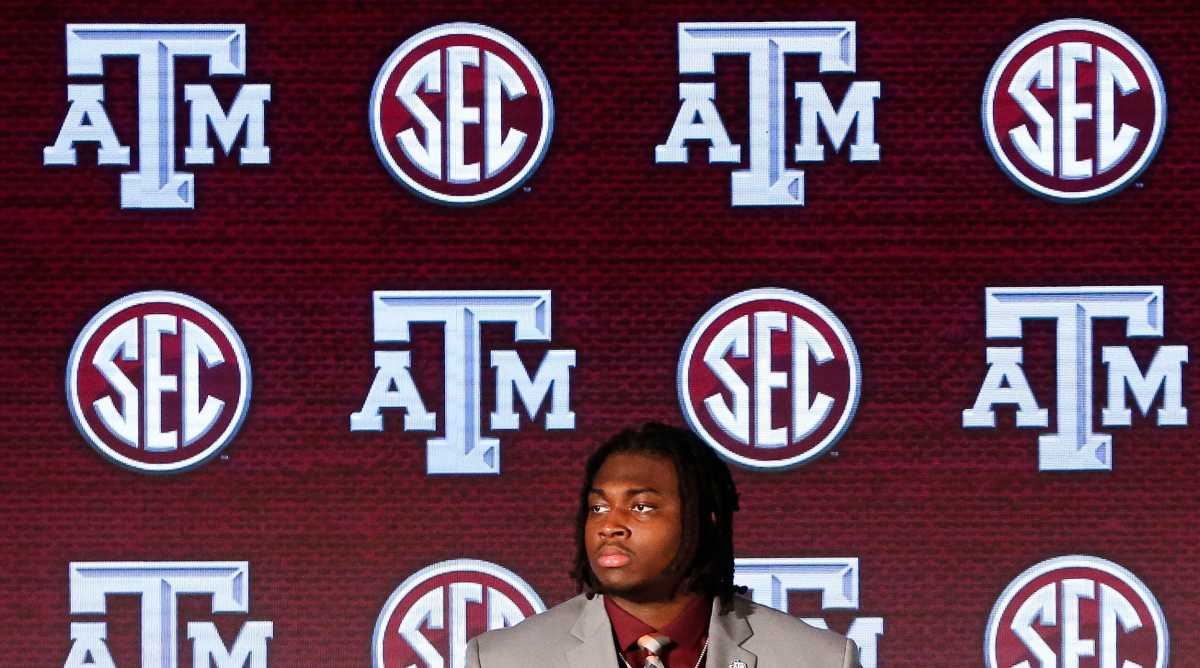Even in the SEC, Texas A&M Can't Escape the Longhorns

On the night of Sept. 7, 2012, Texas A&M officials hosted Southeastern Conference commissioner Mike Slive for a lavish dinner in an on-campus reception hall. The occasion: the Aggies would play their first football game as an SEC member the next day. I had accompanied Slive on this trip for an all-access story, but was politely kicked to the curb when it was time for him to dine with the A&M power brokers.
When dinner had wrapped, I was ushered into the room to resume my assignment. The mood was celebratory, smiles were everywhere. A pair of cowboy boots with the SEC logo on them, a gift from A&M, sat at Slive’s feet.
Bottles of wine were on the table. Lips were loosened. Egos were stoked.
One of the A&M officials made a pronouncement that articulated everything about the school’s acrimonious parting with the Big 12 and desire for this new start in the SEC. “Fifty years from now,” the man said, “we will be the controlling brand in this state.”
Welp. Texas A&M’s control issues have resurfaced.

After less than a decade apart, Texas—the cursed burnt orange, the hated Longhorns, the cancerous conference partner—is poised to re-enter Texas A&M’s life and scuttle its 50-year plan. The school that has always had the most clout and prestige in the Lone Star State has conspired with fellow Big 12 blueblood Oklahoma to seek entry into the SEC, a blockbuster development that could change just about everything in college athletics.
Including the fate of their rivals from College Station. What a staggering potential reversal of fortune. What a repudiation of A&M’s power play. What a cautionary tale for universities that view everything through the lens of outperforming their rival.
Starting fresh now looks like starting over, in an arrangement the Aggies do not want in the least. Nothing like getting divorced, moving away, then having the new neighborhood welcome your ex to move in next door.
On a festive 2012 night when the commissioner of the SEC went to Kyle Field and marveled at Midnight Yell practice, the future seemed unlimited for the Aggies. Now, the next commissioner of the SEC—and the rest of the league—seems prepared to ignore their wishes and serve them a humbling reminder of their place in the college athletic hierarchy.
The messages to that effect are clear. SEC message No 1: We like you, Texas A&M, but we love the idea of Texas in our league.
The Aggies have done what they can to slow the train that is prepared to run them over, refusing to let this stealth power play unfold behind closed doors. It seems highly likely that the school leaked the initial bombshell to the Houston Chronicle, igniting a furor that has at least put all involved parties in an awkward position.
When the story broke, athletic director Ross Bjork was near all the microphones at SEC media days to voice A&M’s desire to remain the only Texas member of the league. Football coach Jimbo Fisher issued a warning: “Be careful what you wish for if you jump in this league.” And former school president R. Bowen Loftin, who was in charge when A&M made its SEC move, declared that Texas joining the league would violate a “gentleman’s agreement.”
What a quaint concept: gentlemen and college athletics. How cute.
Loftin cited an unofficial veto power for SEC East schools in regard to their in-state rivals from the Atlantic Coast Conference: Florida could block Florida State; South Carolina could block Clemson; Georgia could block Georgia Tech. He said that Slive extended that same latitude to A&M when it comes to its state. But none of those ACC schools—not even Clemson—brings to the table what Texas does. And A&M’s nine-year membership in the SEC doesn’t seem like near enough to have established the clout to derail this potential move.
SEC message No. 2: Thank you for making your feelings known. We will now trample over them in pursuit of even more power and revenue. You’re on a need-to-know basis going forward.
This is a reinforcement of who remains the controlling brand in Texas, even if its football program has done nothing to justify that status for more than a decade. Texas football currently is the rich kid that keeps wrecking the family Ferraris, but it also is old money, big money, big tradition, big fan base, big market draw.
If Texas knocks, every conference in the country opens its door and tells everyone inside to make room. Harvey Schiller, who was SEC commissioner in the late 1980s, told me there was chatter even then about adding the Longhorns and Sooners.
Texas A&M is in a better place than Texas in terms of program development right now—and don’t underestimate the impact of the Aggies’ surge into the national top five last fall on Tom Herman’s job security in Austin. But it is still the school with one football national title, in 1939, which barely counts. For all of its institutional and fan self-importance, the historic resumé lags in the sport that matters.

They’re trying, almost painfully hard. They made the bold move to a new league. They spent jaw-dropping sums for massive facility upgrades; for a $75 million fully guaranteed contract for Fisher; for all the necessary outlays for support staff and assistant salary pool.
And then the return on investment started happening. They went 9-1 last season, losing only to juggernaut Alabama, and at least made the College Football Playoff selection committee squirm a bit in deciding on Notre Dame over Texas A&M for the fourth spot.
All that work, all the progress, all those steps toward becoming the controlling brand in Texas. Where is the love from our league? We deserve more respect than this.
SEC message No. 3: OK, cool. Hook ‘em.
More College Football Coverage:
• Texas and Oklahoma's SEC Inquiry Stuns Texas A&M, Media Day
• Where Does the Rest of the Big 12 Go From Here?
• The Rose Bowl Throws a Wrench in College Football's Playoff Expansion Plan
• The SEC, NCAA and a Fight to Change College Sports
